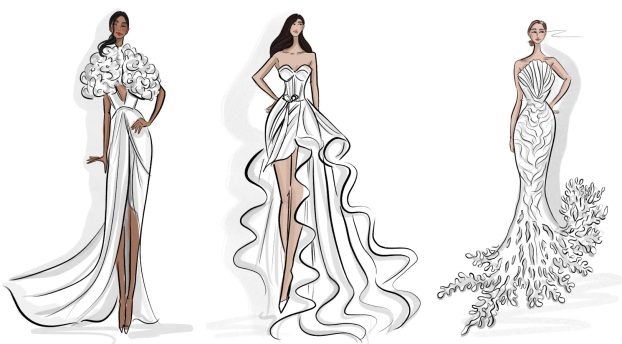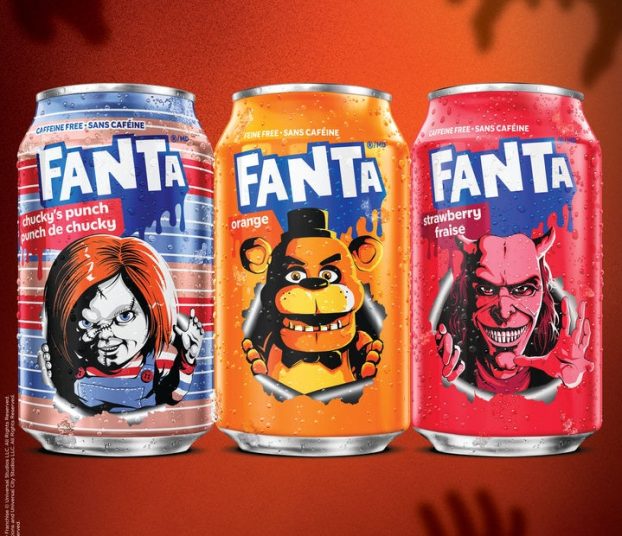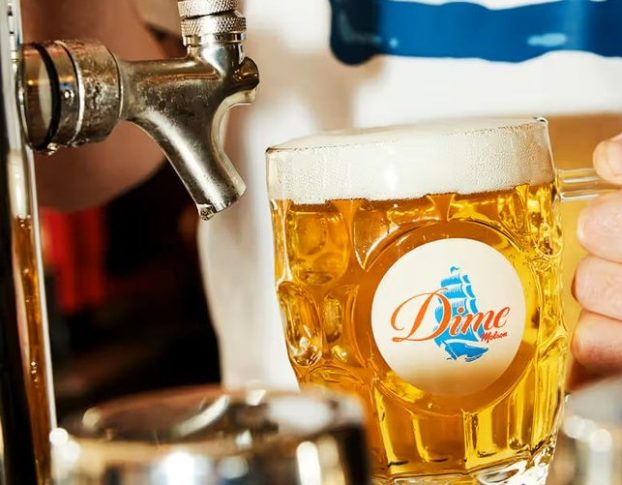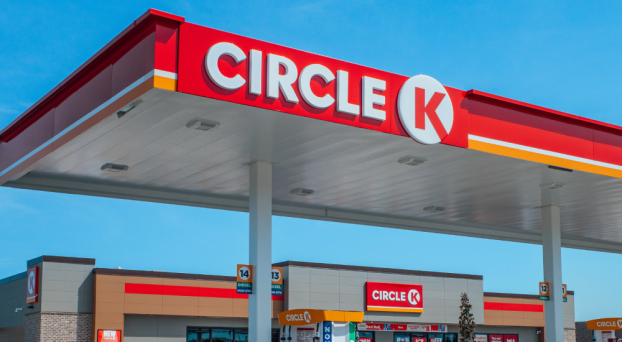Great design isn’t about following a formula. As Don Watt’s work has taught us, great design is about doing what works best for the brand, and if you master those insights, brilliant work will result.
But as in fashion, interior design or any other creative industry, it’s only natural that certain trends emerge. Strategy takes a look at a few of these recent trends – a hand-made renaissance, designs that can adapt, and agencies that are getting in on the product innovation game – and who is making them work brilliantly.
*Trend: organic design
The Carlton Hotel – Taxi adds character to Carlton

Rage against the machine
‘I call it anti-technology or anti-machine,’ says Dave Watson, CD design North America at Taxi, referring to a recent proliferation of seemingly hand-crafted design – found on everything from magazine editorial pages to movie credits (think Juno). ‘Designers are really yearning for the days of yore when print was king…Sometimes when you look at design, especially modern design, although beautiful, it could be considered a little cold. I think people are looking for warm communications and something that speaks to them on an intuitive level.’
Setting the Carlton apart
After New York’s Carlton Hotel underwent a multi-million dollar architectural and interior design facelift, Taxi was brought in to bring the branding up to par – and set it apart.
‘Everyone thought the Carlton was part of the Ritz Carlton, which they have no affiliation with whatsoever,’ Watson explains. ‘Ritz Carlton had been using gold in the past, and this was just a small thing, but the Carlton Hotel letterhead had been using gold, so it was a pretty easy, simple fix [to change the colour].’
Carlton, the character
Walking into the Carlton Hotel after the renovations, Watson says the first word that comes to mind is ‘warmth.’ The challenge was to personify that feeling while keeping with the 1920s-style luxury of the hotel.
Inspired by small, black and white illustrations hanging on the walls of the hotel, Watson took ‘personify’ literally and created a fictional, hand-drawn hotel ambassador named Carlton, a doorman who is ‘a little bit British, so he’s prim and proper, which speaks to that part of the hotel, but also a little New York, so he’s going to tell you exactly what he thinks.’
After trying unsuccessfully to find out who drew the original illustrations (they even had an art expert come in to try and decipher them), Taxi found the next best thing – Brussels-based artist Benoit, whose interpretation of Carlton was exactly what they were looking for. The end result was a whimsical yet refined spokesperson, accompanied by a logo that appears to be the result of paintbrush strokes.
Illustration at your service
You can find evidence of the hotel’s new branding on everything from doorknockers to laundry bags to pens. Carlton himself is seen doing a variety of tasks, such as carrying a tray or even carrying a guest in his arms.
Online at Carltonhotelny.com, created by Denver-based FL-2, Carlton’s presence is felt on practically every page, with quotes from the character such as ‘I’m honored to tell you about the hotel’s history, somebody please draw me some goosebumps.’ There’s even an ‘Ask Carlton’ section where visitors can type in their queries about New York and get responses in Carlton’s voice.
‘The idea is that the epicentre of New York is the Carlton – or Carlton himself,’ says Watson, ‘and there’s nothing he doesn’t know.’
*Trend: adaptable design
La Maison Simons – Simons plays with i.five

An icon gets sporty
When La Maison Simons, a Quebec City-based department store with a 170-year history, developed a new sports brand for men, they enlisted Montreal-based Bleublancrouge to create a brand identity that included a name, logo and visual platform. It would be used for the new clothing label, but also for a new in-store department that sold a variety of sports brands.
The result was i.five – a name that came from personalizing the concept of the high-five – a gesture often seen in sports at the moment an athlete has achieved success.
“Our ambition [was] to make this brand the symbol of always wanting to do better, that’s really the inspiration,” says Marie-Hélène Trottier, CD design at Bleublancrouge.
BBR created a vibrant brand bible that educated employees and clients on the guidelines for the new athletic offering.
A logo on the move
Trottier describes the i.five logo as “a game between the letter ‘e’ and the number five” (the “e” is a 5 upside down), noting that they wanted to bring numbers into the equation because they’re such a big part of the sports environment – what would sports be without time limits, stopwatches or scores?
“The keywords ‘movement’ and ‘energy’ were the core of the visual tone,” says Trottier. So when Simons asked BBR to make sure eight different sports were represented, the agency created a logo that literally moved – from “i.five” into a stick figure that does everything from weightlifting to swimming to skiing.
The visual platform – as seen in the brand bible – was also inspired by playing fields, both real and fantastic, such as clouds in the sky or the roofs of buildings.
The brand and department launched in Quebec City last spring, but is expected to move (with energy) into other Simons stores in the year ahead.
Niagara Economic Development Corporation – A Niagara for all reasons

One place, many interests
Imagine a table full of advertisers, all with different interests, and you have to come up with a single brand design that will please all of them. This was essentially the scenario Cundari found itself in when the agency was commissioned by the Niagara Economic Development Corporation to create a brand identity for the entire region.
Getting different interests – from hotels to vineyards to municipalities – to adopt a cohesive brand identity was crucial to Niagara’s image, according to Dean Martin, CD branding and design at Cundari.
“They’re not just competing for tourist dollars, they’re competing for investment, they want to make sure jobs go to that region, that they’re attracting the right people to work, live and retire there,” Martin says. “If you don’t tell a story, it will be articulated by someone else and you don’t have control over it.”
Niagara originals
The winning concept that got everyone on board was a bold letter “n” with a maple leaf graphic in the middle white space and the simple tagline “Niagara Original” below, which speaks to the historical significance of the region and the many industries that originated there.
But the key to the design is the changeability of the centre graphic – transforming into a wine glass, a golf ball or whatever best represents a particular industry. To keep everything in check, Cundari set out strict guidelines for individual logos, such as a degree of formal sophistication and a unique communications benefit that was readily apparent.
“Your brand has to live in areas where it’s always competing for attention, so you need something that is bold and singular, something that can really stand out,” Martin says about the logo choice, noting that it’s not dependent on colour, making it even more adaptable.
Departing the Falls
“We really wanted to stay away from the Falls,” says Martin. “If you Google Niagara logos or brand marks, count the ones that have a water or waterfall motif. You really need to stay away from what’s been done before, simply because you will not differentiate yourself, and you will not convey that sense of authenticity.”
*Trend: DIY design
Drip – Creating a new Canadian Classic

If you can’t find it, make it
“The line is born out of necessity,” says Lisa Greenberg, CD and partner at GJP, about her side project Drip. Greenberg, a native of South Africa, became frustrated whenever she wanted to bring home a souvenir because the packaging for many distinctly Canadian products was, well, ugly. So she set out to do something about it, along with former creative partner Trevor Schoenfeld and designer Scott Leder.
It turned out that Leder’s wife had connections to a farmer near St. Jacobs, ON., who made “the best maple syrup I’ve ever tasted in my life,” according to Greenberg.
They started out with 600 bottles, but once they got picked up by the website Lovely Package and Wallpaper magazine, demand started to outweigh supply (Greenberg even got a call from a woman in Amsterdam). Now they’re in the process of manufacturing it on a grander scale, with plans to start selling it in stores soon.
Dripping with style
The idea of using a bottle with a pipette dropper came out of Greenberg’s first experience with the classic condiment: “When I first tried it, I spilled it all over, and I felt like you didn’t need as much. I liked the idea that I could control the amount that drips onto my food.” Greenberg also wanted Drip to be the “purest essence of maple” – a precious product that requires only a small amount to get the full effect.
The syrup comes in packs of three varieties – blonde, amber and copper – each with a description written in a quirky, irreverent style. On the amber bottle, for instance, it says, “When we first tasted amber, our president wept with joy & ruined her favourite cashmere sweater. She wasn’t even mad (& she loved that sweater).”
“I think brands do better today with voices because they start a relationship with you,” says Greenberg.
In control
So why did Greenberg and her partners venture into the maple syrup biz as opposed to suggesting a redesign to an already established brand? “I don’t want to hear no,” she says. “I don’t want to hear ‘you can’t say that,’ I don’t want to hear that it’s too small or too big –
I just want to put something out there we aesthetically like, that we can stand behind, just for once, just for us, and that’s what this is. It’s just like a baby.”
Functionalab -Sid Lee designs its way into the beauty biz

Starting from scratch
Sid Lee isn’t just in the ad business anymore. Last spring they partnered with a start-up called Functionalab to create a line of supplements sold at a shop within high-end retailer Henri Bendel in New York.
The Montreal-based agency didn’t just design the packaging and retail space – they have equity in the company and were involved on the ground floor with their trademark “commercial creativity” concept, which includes everything from architecture to packaging to interactive marketing.
“We were involved in the genesis of the product,” says Hélène Godin, CD design, Sid Lee, “and for us it was the ultimate creative challenge.”
Fashion and function
The Functionalab look merges the worlds of cosmetics and pharmaceuticals – clinical white packaging is energized with punches of colour. The idea behind the design, according to Godin, is to give consumers confidence in the products without being intimidated by them.
The in-store experience is that of a modernized apothecary – shelves of products line the walls up to the ceiling, accessible by ladder. Products are organized by letters (e.g. V for vitamins) and are colour-coded to make them easier to decipher. Staff consultants help customers pick the
right combinations, and a touch-screen gives more information.
Design from the ground floor
“When the design is applied at the beginning, it changes the vision of the new brand,” says Godin, noting that sustained success comes from starting with a strong design. “As designers, we think design is key to the success of the future of the brand, it’s the longevity of the brand, and it brings a lot of the functional aspect of the product but also an emotional point of view.”
And the future of the brand looks bright. Functionalab co-founder Erick Goeffrion plans to expand into Harvey Nichols in London, U.K. at the end of May and in Selfridges and other stores by September. The brand will also expand into Brazil and Paris starting in the fall, with an eventual launch planned for Canada.





















